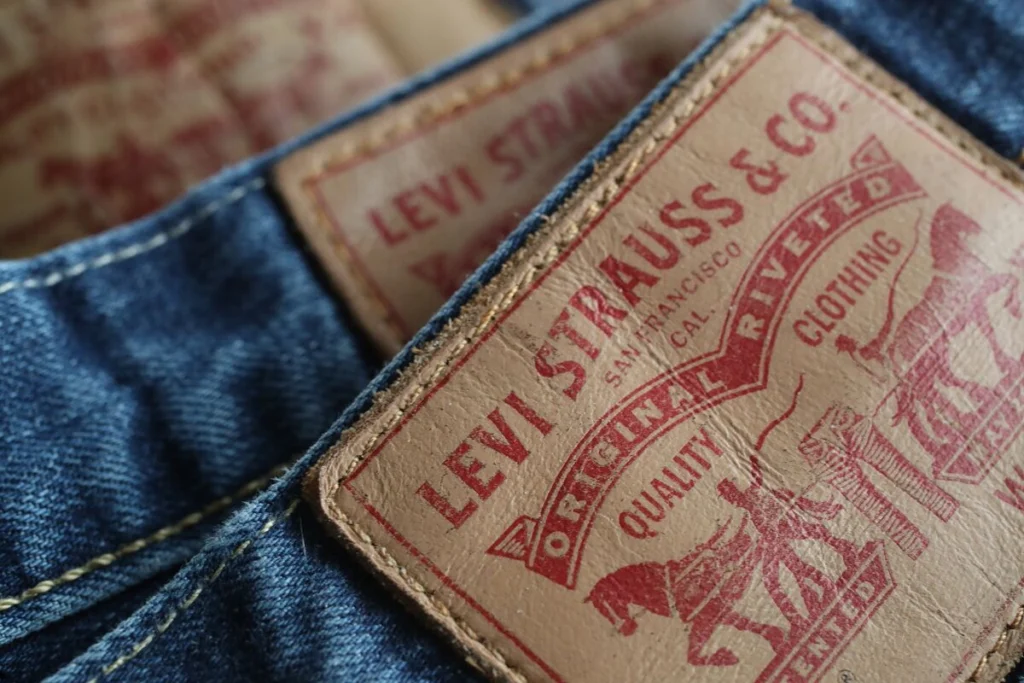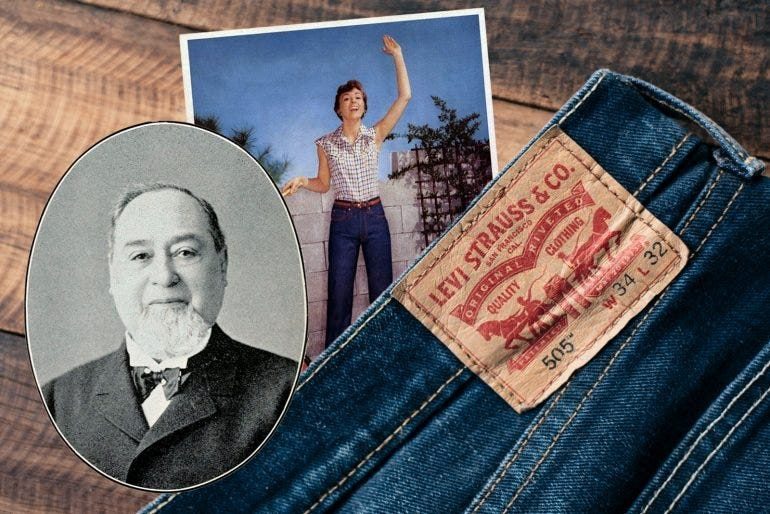As the creator of Levi Strauss & Co., the business credited with creating the blue jeans that have endured as a cultural icon in America, Levi Strauss was a trailblazing businessman. Born in Buttenheim, Germany on February 26, 1829, immigrated to the US in 1847, leaving a lasting impact on business and fashion.
Early Life
In Buttenheim, a village in Bavaria, Germany, Levi Strauss was born into a Jewish family. Born to Hirsch Strauss and his second wife, Rebecca Haas Strauss, he was the youngest of seven siblings. In a modest family, Levi’s father ran a dry goods company, teaching him business fundamentals.
At eighteen, he came to America seeking fortune, following his successful older brothers to New York City. He sailed for America in 1847, first arriving in New York before heading to the burgeoning city of San Francisco, California.
Business Career
In San Francisco, Levi Strauss joined his brother’s dry goods business, aiding in its West Coast expansion. At 24, he teamed up with his brother-in-law, David Stern, to establish Levi Strauss & Co., a wholesale dry goods company. At first, the business imported and sold a variety of products, such as textiles, apparel, and home furnishings.
But Levi Strauss’s career changed drastically in 1872 after meeting tailor Jacob Davis. Davis invented a method to reinforce trousers with metal rivets, enhancing durability, particularly for laborers and miners. Recognizing Davis’s invention’s potential, Strauss collaborated with him to patent the design, resulting in the introduction of blue jeans in 1873.
With Levi’s jeans, the clothing industry transformed, and Levi Strauss & Co. became synonymous with top-quality denim workwear. Over time, the company expanded its offerings, becoming a significant player in fashion with a wide range of apparel and accessories.
He never wavered in its commitment to quality, innovation, and social responsibility. He was renowned for fair treatment of staff and dedication to philanthropy, and funding initiatives in San Francisco and beyond.
Though he passed away on September 26, 1902, his legacy lives on through Levi Strauss & Co. and Levi’s jeans. The brand remains a fashion leader, upholding Levi’s goal of creating stylish, durable apparel globally.
Current status of Levi Strauss & Co.
- Leading the denim industry worldwide, Levi Strauss & Co. is one of the biggest name-brand clothing corporations in the world.
- Under the names Beyond Yoga®, Dockers®, and Levi’s®, the company creates and sells jeans, casual clothing, and related accessories.
- With the most recent trade, Levi Strauss & Co. (stock ticker LEVI) is down 2.21% from its 52-week high of $19.02, which was reached on March 21, 2024, to $18.60 per share on the New York Stock Exchange.
- The company’s stock has a price-to-earnings ratio of 29.82 and a market capitalization of $7.38 billion, based on the last 12 months’ earnings.
- Levi Strauss & Co. aims for faster, more profitable growth, innovating responsibly, and partnering with communities as stewards of natural resources.
- To prioritize customers, the company focuses on enhancing the Levi’s® brand, growing direct-to-consumer operations, and diversifying product offerings.
Levi Strauss & Co. remains a leading global garment manufacturer, prioritizing sustainability, social responsibility, innovation, and growth.

Sustainability Initiative of Levi Strauss & Co
Levi Strauss & Co. has implemented sustainability programs to reduce its environmental impact and promote ethical behavior. Among Levi Strauss & Co.’s major sustainability projects are the following:
Levi’s implements water-saving techniques, including recycling water in factories and reducing denim production water usage.
Sustainable Sourcing: The business is committed to ethically sourcing materials, especially cotton for denim jeans. Emphasizing environmental and social responsibility, Levi’s ensures ethical and sustainable sourcing with suppliers.
Waste Reduction: To reduce waste in its operations, Levi’s has implemented recycling programs for materials such as denim scraps. Additionally, the brand promotes clothing mending and recycling, designing items for durability and longevity.
Carbon Reduction: By making investments in renewable energy sources and enhancing energy efficiency in its facilities, Levi’s is attempting to lessen its carbon impact. The corporation has set high goals to lower greenhouse gas emissions throughout its supply chain.
Well-Being of Workers: Levi’s is dedicated to protecting the health, safety, and welfare of laborers throughout its supply chain. To maintain fair labor standards and give manufacturing workers safe working conditions, the company works with its suppliers.
Levi Strauss & Co.’s continued dedication to social responsibility, environmental care, and moral corporate conduct is reflected in these sustainability projects. Levi’s wants to make a good impact in the fashion business and help ensure a more sustainable future by emphasizing sustainability.
Death
At the age of 73, Levi Strauss, the creator of Levi Strauss & Co., passed away in San Francisco, California, on September 26, 1902. His estate, which is currently worth about $171 million, was estimated to be worth $30 million. He was single and childless. In addition to leaving large bequests to other family members and local nonprofits, such as the University of California, Berkeley, Strauss left the majority of his assets to his four nephews. He was a well-known representative of the Reform school of Judaism and was instrumental in founding Congregation Emanu-El, the city’s first Jewish synagogue. At the Home of Peace Cemetery in Colma, California, Levi Strauss was buried, leaving a long-lasting legacy of charitable giving and civic engagement.
For more achievement stories, read: Eliza Ibarra
Frequently Asked Questions
Where can I purchase Levi’s goods?
Levi’s items can be purchased through online merchants, the company’s website, and several retail locations across the globe.
How is worker well-being promoted by Levi’s?
To maintain fair labor standards and guarantee manufacturing workers safe working conditions, Levi’s works with its suppliers.
Are Levi Strauss and Levi’s the same?
One of the biggest clothing firms in the world and a pioneer in the denim industry is Levi Strauss & Co. They sell their items in over 100 countries and have about 500 locations worldwide. The Levi’s® brand is only one aspect of our narrative.
What criticisms are there against Levi Strauss?
Levi-Strauss came under fire from some anthropologists for his overemphasis on abstract forms. They said he disregarded the authentic Native American way of life and culture. His views relied on stories that were not part of everyday life. He researched myths as isolated texts, not as a living culture, according to his detractors.
Conclusion
To sum up, Levi Strauss & Co. has become a leader in the fashion industry’s use of sustainability. The corporation has exhibited its resolute dedication to environmental stewardship and ethical standards using its extensive projects that target various aspects of the well-being of workers, waste reduction, carbon reduction, sustainable sourcing, and water conservation. By making these initiatives a top priority, Levi’s not only reduces its environmental impact but also raises the bar for the entire industry. As long as Levi Strauss & Co. keeps setting the standard for sustainability, more people will be encouraged to adopt it, which will accelerate the shift towards a more accountable and sustainable future.

